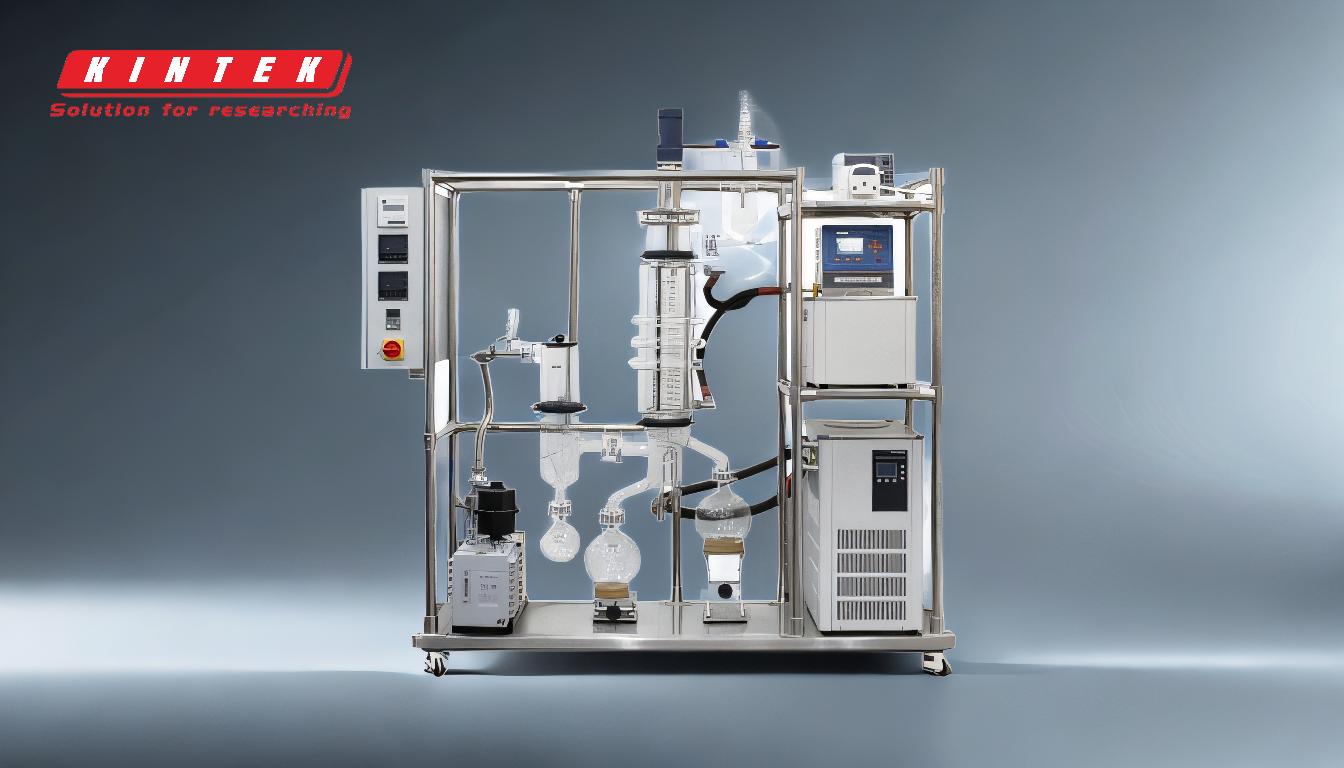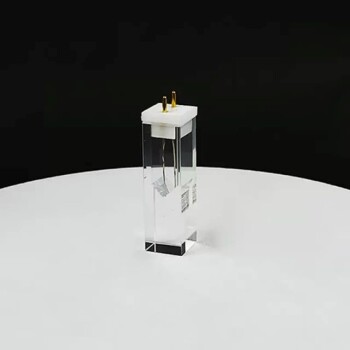Thin film distillation is a specialized distillation technique used to separate components of a mixture based on their boiling points, particularly for heat-sensitive or viscous materials. The process involves spreading the raw material into a thin film on a heated surface, where it is rapidly vaporized and then condensed. This method is advantageous due to its short residence time, which minimizes thermal degradation, and its ability to handle viscous products. However, it comes with drawbacks such as high equipment costs and limited separation capabilities. The technique is particularly effective for high molecular weight products, though it may have lower separation efficiency compared to other methods.
Key Points Explained:

-
Principle of Thin Film Distillation:
- Thin film distillation works by spreading a raw material into a thin film on a heated surface, typically the internal wall of a heated tube or cylinder.
- The thin film ensures rapid and uniform heating, which causes the component with the lower boiling point to vaporize quickly.
- The vapors are then directed to a condenser, where they are cooled and condensed back into a liquid for collection.
-
Key Components and Process:
- Heated Surface: The raw material is spread into a thin layer on a heated surface, such as the internal wall of a tube or cylinder. This surface is maintained at a temperature sufficient to vaporize the desired components.
- Vaporization: The thin film allows for quick and efficient heat transfer, leading to rapid vaporization of the lower boiling point components.
- Condensation: The vapors are then condensed on a low-temperature surface, typically the tubes of a condenser, where they are collected as a purified liquid.
-
Advantages of Thin Film Distillation:
- Short Residence Time: The thin film and rapid heating reduce the time the material is exposed to high temperatures, minimizing thermal degradation, which is crucial for heat-sensitive materials.
- Efficient for Viscous Products: The technique is particularly effective for distilling viscous or high molecular weight products, which are difficult to handle with other distillation methods.
- Fast Distillation: The process is generally faster than traditional distillation methods due to the efficient heat transfer and short residence time.
-
Disadvantages of Thin Film Distillation:
- High Equipment Cost: The specialized equipment required for thin film distillation, such as heated tubes and condensers, can be expensive.
- Limited Separation Capabilities: Thin film distillation may not be as effective for separating components with very close boiling points compared to other distillation techniques.
- Increased Preparation Time: The process may require more preparation time, especially for setting up the thin film and ensuring uniform heating.
-
Applications and Effectiveness:
- High Molecular Weight Products: Thin film distillation is particularly effective for distilling high molecular weight products, such as reprocessing residues, which are difficult to fractionally distill using other methods.
- Heat-Sensitive Materials: The technique is ideal for materials that are sensitive to heat, as the short residence time and efficient heat transfer minimize degradation.
-
Comparison with Other Distillation Methods:
- Traditional Distillation: Unlike traditional distillation, which involves heating a bulk mixture, thin film distillation spreads the material into a thin layer, allowing for quicker and more controlled vaporization.
- Molecular Distillation: Thin film free falling molecular distillation is a variation where the material is pumped into a heated chamber with revolving rods, creating a thin film along the chamber walls. This method is particularly effective for high molecular weight products but has lower separation efficiency and longer production times.
In summary, thin film distillation is a highly effective method for distilling heat-sensitive or viscous materials, offering advantages such as reduced thermal degradation and fast processing times. However, it comes with challenges like high equipment costs and limited separation capabilities, making it more suitable for specific applications rather than general-purpose distillation.
Summary Table:
| Aspect | Details |
|---|---|
| Principle | Spreads material into a thin film on a heated surface for rapid vaporization. |
| Key Components | Heated surface, vaporization, and condensation. |
| Advantages | Short residence time, efficient for viscous products, fast distillation. |
| Disadvantages | High equipment costs, limited separation capabilities, increased prep time. |
| Applications | High molecular weight products, heat-sensitive materials. |
| Comparison | Faster than traditional distillation, lower separation efficiency than molecular distillation. |
Discover how thin film distillation can optimize your process—contact our experts today!











